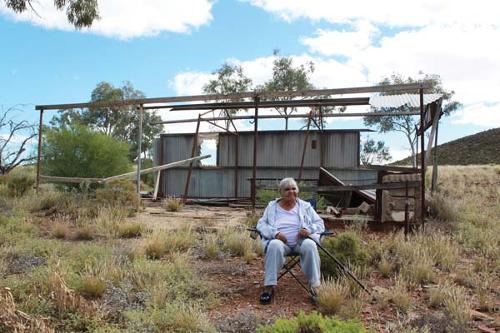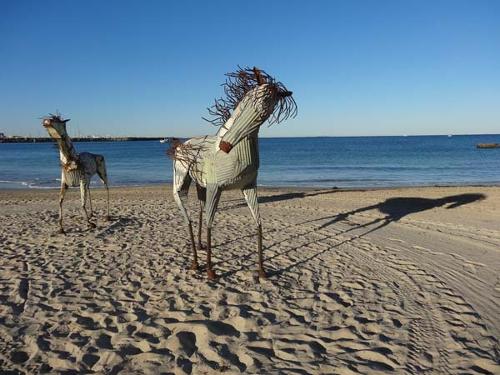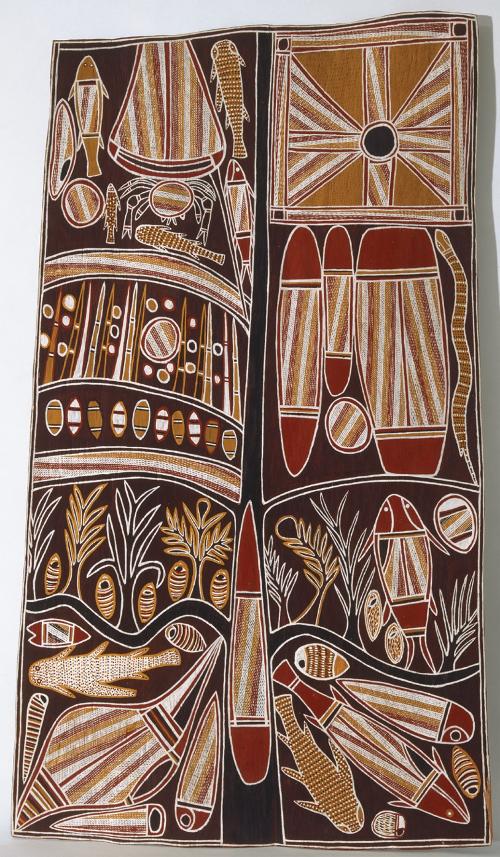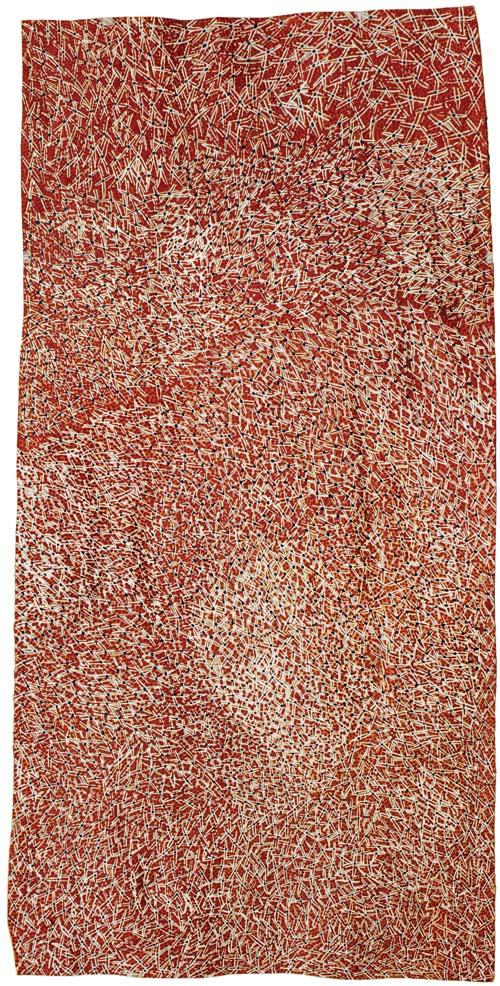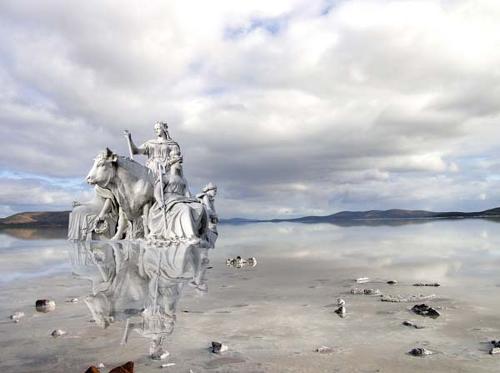
The recent passing of the highly respected Tiwi artist Jean Baptiste Apuatimi is cause for sad reflection as she was both an accomplished artist and an individual of great personal stature. Educated as a 'dormitory girl' by the Roman Catholic nuns at Bathurst Island Mission, Apuatimi married renowned carver Declan Apuatimi (1930-1985) in one of the earliest local church weddings held on Bathurst and Melville Islands. Jean always spoke happily of her mission childhood, nevertheless later in life her paintings came to epitomise the national resurgence in Indigenous identity through art, rather than being a reflection of the early history of institutionalised acculturation on the islands.
Apuatimi acknowledged the inspiration of her late husband yet her subsequent career greatly contrasted with his. Having worked unassumingly as his assistant and the maker of saleable ceremonial objects for many years, by 1991 she found carving in the heavy ironwood too physically demanding. It was at the suggestion of Beverly and Anthony Knight of Alcaston Gallery, that Apuatimi first commenced painting on canvas that year. The initial tentative pictures, with their distinct figurative imagery, were unlike any other painting created at that time on the Tiwi islands. Within a few months, Apuatimi’s major quartet, Ngirramini (The story of Purukuparli), acquired by the National Gallery of Victoria, testified to her confidence as an artist in the new medium. In subsequent years, Jean would constantly push aesthetic boundaries in exploring new themes, such as her crocodile and sawfish designs. She was never satisfied, unlike her late husband and many of her peers, to repeatedly resort to the same formulaic solutions in the presentation of traditional subjects. She enjoyed painting.
The list of her exhibition achievements late in life are considerable and include the exhibitions Ngingingawula jilamara kapi purunguparri: Our Designs in Bark, National Gallery of Australia, 1992; Power of the Land: Masterpieces of Aboriginal Art, National Gallery of Australia, 2001; Kiripuranji: Clever with our Hands: Contemporary Art from the Tiwi Islands, Artbank international touring exhibition 2002-2005; and Culture Warriors, the inaugural National Indigenous Art Triennial exhibition at the National Gallery of Australia, 2007 also shown in Washington D.C. at the Katzen Arts Centre in 2009. Apuatimi is represented in national and international collections.
Apuatimi was the last of an important generation whose career truly spanned two worlds. A Tiwi artist who could speak of tradition (palaneri) with authority and who had participated with her husband in the extraordinary period of creativity, making art for local ceremony and for the mainland market, that occurred on the islands during the 1960s-1980s. One wishes her safe journey back to her country, Imalu, where the yellow ochres are almost blinding in their brilliance and the white ochres of the beach cliffs cast pristine reflections in the still morning waters of the Timor Sea.
She was a quietly spoken dignified woman who avoided ‘humbug’ both in life and art. It was the opening of her first Melbourne exhibition in 1991 and Apuatimi was nowhere to be seen in the noisy crowded gallery. Eventually I found her standing on Collins St outside the gallery and asked her how she enjoying the opening. She replied, "You murantawi like ‘em nyarringari." [You white-people are like magpie geese.]


